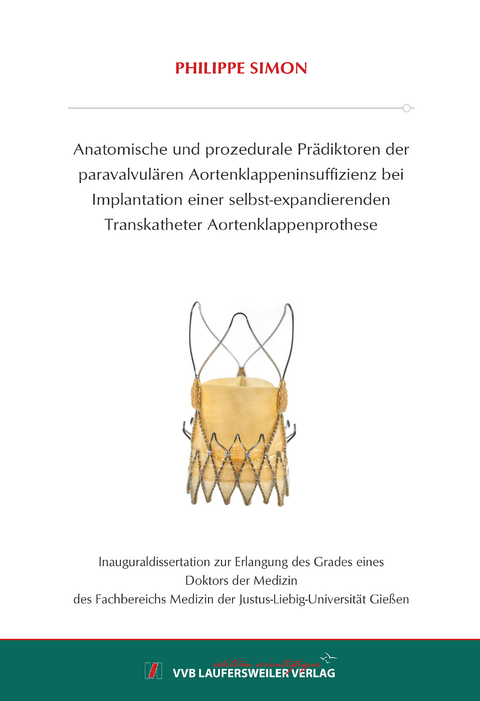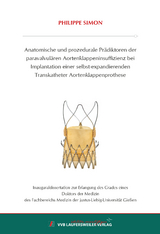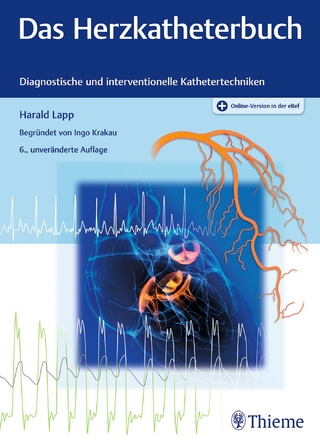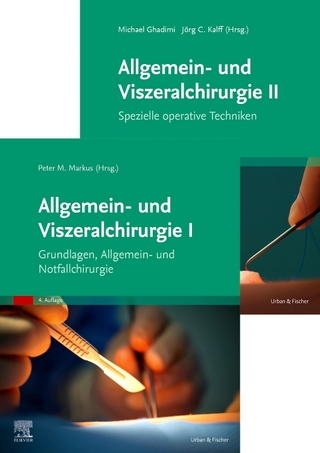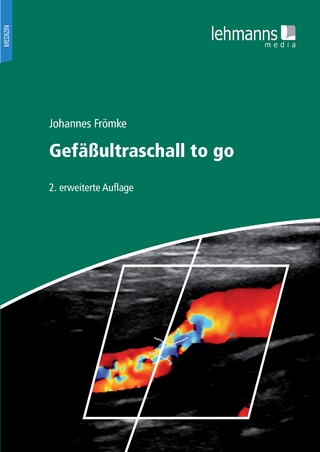Anatomische und prozedurale Prädiktoren der paravalvulären Aortenklappeninsuffizienz bei Implantation einer selbst-expandierenden Transkatheter Aortenklappenprothese
Seiten
2022
VVB Laufersweiler Verlag
978-3-8359-7088-5 (ISBN)
VVB Laufersweiler Verlag
978-3-8359-7088-5 (ISBN)
- Keine Verlagsinformationen verfügbar
- Artikel merken
Die Aortenklappenstenose (AS) ist das häufigste Klappenvitium. Die seit 2002 ursprünglich für Hochrisikopatienten anerkannte kathetergestützte Aortenklappenimplantation (engl. transcatheter aortic valve implantation, TAVI) wird in neuesten Studien bereits bei Niedrigrisikopatienten implantiert. Die paravalvuläre Insuffizenz (engl. paravalvular leakage, PVL) ist weiterhin eines der häufigsten Komplikationen insbesondere der Acurate neoTM-Prothese („Boston Scientific™”, Marlborough, MA, USA). PVL größer-gleich moderat (≥ 2°) sind zu vermeiden, da sie mit erhöhter Sterblichkeit assoziiert sind. Jeder Proband erhielt präprozedural eine Echokardiografie (Gerät der Firma “Philips Healthcare“ aus Hamburg, Deutschland) zur Diagnosesicherung der AS sowie eine Multidetektor Computertomografie (SOMATOM der Firma „Siemens Healthcare®“ aus Forchheim, Deutschland) zur Prozedurplanung. Über ein 14 Fr-Schleusensystem (iSleeve („Boston Scientific™”, Marlborough, MA, USA)) wird die Acurate neoTM-Prothese transfemoral bis zur Aortenklappe vorgeschoben und mittels „top-to-down“-Prinzip entfaltet. Von 2012 bis 2017 wurden insgesamt 500 Patienten im Durchschnittsalter von 81,9 Jahren [IQA (Interquartilsabstand) 78,8–85,3] mittels Acurate neoTM-Prothese therapiert, wovon 65,1 % (n = 324) weiblich waren. Zwei Probanden erhielten keine Echokardiografie, da intraoperativ zu einem offenen AKE konvertiert werden musste und wurden ausgeschlossen (n = 498). Ein PVL wurde anhand des Anteils an der Zirkumferenz des AA nach Valve Academic Research Consortium (VARC-2) in kein-, mildes-, moderates- und schweres PVL eingeteilt (51). Bei 6,4 % (n = 32) der Probanden wurde in der echokardiografischen Nachuntersuchung ein ≥ 2° PVL diagnostiziert. Ein hoher Kalziumscore der nativen Aortenklappe (3.283 AU [IQA 2.348–4.069] (Agatston Unit) für PVLs ≥ 2° und 2.199 AU [IQA 1.561–2.911] für PVLs < 2° (p < 0,001)) und ein zu klein, anhand des Umfangs in der Systole errechneter Cover-Index (3,3 % [IQA 1,0–6,5] für PVL ≥ 2° und 5,0 % [IQA 2,9–7,3] für PVL < 2° (p = 0,007)) korrelierten dabei signifikant mit PVL ≥ 2°. Insbesondere an der LCC korrelierte die Kalklast mit PVLs ≥ 2° (CVAK-LCC: PVL ≥ 2° 236,0 mm3 [IQA 168,8–436,0] und PVL < 2° 134,0 mm3 [IQA 70,0–222,3] (p < 0,001)). Der leichte Vorschub des Schleusensystem bei Entfaltung reduzierte PVLs signifikant (p = 0,001). Zusammenfassend benötigt die Acurate neoTM zur Vermeidung PVLs eine geringe Kalklast insbesondere an der LCC und ein leichtes Überdimensionieren bei der Prothesengrößenwahl. Während der Implantation ist ein leichter Kontakt mit den nativen Taschen sowie ein dezenter Vorschub in Richtung linksventrikulär entscheidend. Aortic valve stenosis (AS) is the most common valvular heart disease. Transcatheter aortic valve implantation (TAVI), originally approved for high-risk patients since 2002, is already implanted in low-risk patients in recent studies. Paravalvular leakage (PVL) remains one of the most common complications, particularly with the Acurate neoTM-prosthesis („Boston Scientific™”, Marlborough, MA, USA). PVL greater-equal to moderate (≥ 2°) are to be avoided as they are associated with increased mortality. Each subject received preprocedural echocardiography (“Philips Healthcare“, Hamburg, Germany) to confirm the diagnosis of AS and multidetector computed tomography (SOMATOM from „Siemens Healthcare®“, Forchheim, Germany) for procedure planning. Via a 14 Fr delivery-system (iSleeve („Boston Scientific™”, Marlborough, MA, USA)), the Acurate neoTM-prosthesis is advanced transfemorally to the aortic valve and unfolded using the "top-to-down" deployement. From 2012 to 2017, a total of 500 patients with a mean age of 81.9 years [IQA (interquartile range) 78.8-85.3] were treated using Acurate neoTM-prosthesis, of which 65.1 % (n = 324) were female. Two subjects did not receive echocardiography because of intraoperative conversion to open surgery and were excluded (n = 498). A PVL was classified into no-, mild-, moderate-, and severe PVL based on the proportion of circumferential AA according to Valve Academic Research Consortium (VARC-2) (47). A ≥ 2° PVL was diagnosed in 6.4 % (n = 32) of subjects at echocardiographic follow-up. A high native aortic valve calcium score (3,283 AU [IQA 2,348–4,069] (Agatston Unit) for PVLs ≥ 2° and 2,199 AU [IQA 1,561–2,911] for PVLs < 2° (p < 0.001)) and a too small cover-index calculated using the perimeter in systole (3.3 % [IQA 1.0-6.5] for PVL ≥ 2° and 5.0 % [IQA 2.9-7.3] for PVL < 2° (p = 0.007)) correlated significantly with PVL ≥ 2°. In particular, at the LCC, calcium volume correlated with PVLs ≥ 2° (CVAK-LCC: PVL ≥ 2° 236.0 mm3 [IQA 168.8–436.0] and PVL < 2° 134.0 mm3 [IQA 70.0–222.3] (p < 0.001)). Slight advancement of the delivery system during deployment significantly reduced PVLs (p = 0.001). In summary, to avoid PVLs, the Acurate neoTM requires a low calcium volume, especially at the LCC, and a slight oversizing. During implantation, a light contact with the native leaflets and a decent advancement towards the left ventricular is crucial.
| Erscheinungsdatum | 08.01.2023 |
|---|---|
| Reihe/Serie | Edition Scientifique |
| Verlagsort | Gießen |
| Sprache | deutsch |
| Maße | 148 x 215 mm |
| Gewicht | 180 g |
| Themenwelt | Sachbuch/Ratgeber ► Gesundheit / Leben / Psychologie ► Krankheiten / Heilverfahren |
| Medizinische Fachgebiete ► Chirurgie ► Herz- / Thorax- / Gefäßchirurgie | |
| Schlagworte | Aortenklappen • Aortenklappenstenose (AS) • Aortic valve stenosis (AS) • Herzklappen • Implantation • Prothesen |
| ISBN-10 | 3-8359-7088-7 / 3835970887 |
| ISBN-13 | 978-3-8359-7088-5 / 9783835970885 |
| Zustand | Neuware |
| Haben Sie eine Frage zum Produkt? |
Mehr entdecken
aus dem Bereich
aus dem Bereich
Diagnostische und interventionelle Kathetertechniken
Buch (2022)
Thieme (Verlag)
220,00 €
Buch | Hardcover (2022)
Urban & Fischer in Elsevier (Verlag)
270,00 €
